Catching an early bird Expo Line ride
November 6, 2011

This is only a test—but not for long. As the Exposition Light Rail Line rolls closer to becoming a reality for Los Angeles transit customers, operators are now trying out the trains daily on portions of the new route. (Details on the test runs—from Flower and 23rd Street to La Cienega and Jefferson Boulevard—are here, along with safety tips.)
Supervisor and Metro Board Member Zev Yaroslavsky recently hopped aboard one of the test runs. The view from the train made it clear, he said, that getting from Point A to Point B will be only part of the Expo Line’s journey. As new routes connect with existing lines, entire regions of Los Angeles County are becoming accessible via public transit.
“Every one of these lines is another tipping point,” Yaroslavsky said.
All the test runs are a prelude to opening the first leg of the line early next year. Initially, trains are expected to run from the 7th Street Metro Center downtown to La Cienega and Jefferson. Meanwhile, construction is continuing on Phase 1’s westernmost station in Culver City.
This interactive map provides a preview of some of the cultural attractions, employment centers and educational institutions along Phase 1 of the route—including USC, the Natural History Museum, the California Science Center, the California African-American Museum and the Los Angeles Memorial Coliseum.
Eventually, Expo Phase 2 will extend all the way to 4th Street and Colorado Avenue in Santa Monica. Ground was broken on that phase a couple months ago. When complete, the 15.2-mile line will be the first mass transit rail project on the Westside since the Red Cars.
Posted 11/6/11
Coroner cleans up at awards time
November 3, 2011
Los Angeles County appreciates efficiency, and the coroner has the evidence to prove it.
After DNA revolutionized forensic science, criminal cases that had been “cold” for years suddenly got warmer. Law enforcement agencies formed special units to take fresh looks at them, and coroner’s Evidence Control Unit, which keeps material from more than 60,000 homicides, found itself flooded with requests.
Before 2008, that evidence was stored warehouse-style, each piece catalogued numerically. Evidence from one homicide could be spread across several rooms within piles of other evidence, which made gathering it a time-consuming chore. Before the widespread use of DNA testing, the evidence unit received very few requests from police, so easy access wasn’t a priority. In most cases, law enforcement agencies didn’t even know the evidence was there.
Enter Michelle Sandberg. In 2008, Sandberg, who was working as a toxicologist, was chosen to bring the unit into the new era, to meet the new demand. Due to budget constraints she could not hire extra hands, so she enlisted volunteers from universities and the military to help her and two other staffers come up with a new way of doing business.
Their efforts paid off. On October 19, the evidence control unit makeover will be honored as one of the ten most innovative programs in the county at the 25th Annual Productivity and Quality Awards luncheon. The top three programs among them will win Bronze, Silver and Gold Eagle awards. Winners can then submit applications for awards from the California State Association of Counties and the National Association of Counties.
This year’s other honorees range from a groundwater reclamation program that saves an estimated $236 million annually to a free-for-taxpayers high school STD prevention program that has health and educational benefits that aren’t easily monetized.
The awards are presented by the county’s Quality and Productivity Commission. Over the past 25 years, the programs it has recognized have saved taxpayers an estimated $3.6 billion. Winners are also highlighted in an annual multimedia report, which promotes “best practices” countywide. (See last year’s report here.)
Ruth Wong, executive director of the commission, said the goal is to inspire copycats. “What we are hoping is that all or part of these projects will be picked up by other departments. We want them to spread.”
Already, news of the evidence unit’s success is spreading. The National Institute of Justice sent a representative to have a look at Sandberg’s shop two weeks ago. Sandberg, now acting supervising criminalist, and the director of the coroner’s office, Anthony T. Hernandez, have been invited to Washington, D.C. this March to address the Working Group for Medicolegal Death Investigation, which establishes nationwide standards for evidence management.
She will explain how her team tackled the problem, organizing the evidence in “kits” for each case. Each was labeled with a case number and a list of contents, and added to a computer database shared by 145 agencies nationwide. The Los Angeles Police Department and the L.A. County Sheriff now work closely with the unit, lending staff and advice.
Sandberg’s system has become so efficient that she has started contacting law enforcement agencies herself so they can “come get their stuff.” Out of the 280,000 pieces of evidence her unit housed, only 30,000 remain. As a result of that effort, 41,000 cases have been processed in two years, and decades-old murders and rapes have been solved.
Recognition for her unit’s transformation is great, Sandberg said, but even more gratifying is the sense of contributing to those successful investigations. “It is rewarding because of the work the detectives have done on the cases, using the evidence,” she said. “There is justice for the victims’ families and for all the people who have worked so hard to get it.”
Posted 10/6/11
The greening of L.A.’s Civic Center
November 3, 2011
The giant yuccas haven’t moved in yet, and neither have the California Pepper, Japanese Pagoda or Strawberry Snowball trees.
But make no mistake, the downtown park project is definitely entering its green period.
The first trees are now taking root in the 12-acre expanse in the heart of the Civic Center—the first visible manifestation of the ambitious Grand Avenue Project intended to create a cultural and civic sense of place in downtown Los Angeles. Since July, 50 of 373 new trees have been planted, joining the 95 that were left in place on the site when work began in 2010. (Many of the new trees are varieties of palm, and there also are dozens of California sycamores and Tipuana tipu trees in the arboreal lineup, along with eight coast live oaks and a wide range of other varieties.) Landscaping on the project is expected to continue through next May.
The park, scheduled to open next summer, will represent a dramatic transformation of a once banal stretch of downtown public space, creating an “iconic” and “spectacular” gathering spot for diverse activities ranging from picnicking to big-screen musical simulcasts. Stretching in three sections from the Music Center to City Hall, the park’s ADA-accessible ramps will complement a series of stairs, terraces and lawns.
The tree planting has picked up pace lately. Newly-installed palm trees (some weighing 15,000 pounds each) and silvery-leafed olive trees are now ensconced near the park’s new Starbucks building (which adds its own blast of green to the landscape thanks to its bright chartreuse slanted roof.)
The Board of Supervisors this week approved an amended 10-year agreement with Starbucks increasing the company’s monthly rent to reflect the new, larger 1,195-square-foot space; it will go to $3,585, from $2,250. Since business is expected to increase once the new park is open, the county—which will receive 6% of the coffee concession’s annual gross sales above $717,000—anticipates that its take will go up as well. The total annual revenue for the county, including the rent, is projected to be about $70,800 a year, the report said
The current Starbucks, long a fixture of daily life for jurors and Civic Center employees, will be leveled when the new facility is ready for business.
Also coming down soon will be the wooden barricades and concrete “k-rail” barriers that have closed off the Grand Avenue end of the project for months. The Grand Avenue sidewalk, which also has been closed, will be reopened on Monday, November 14, along with a mid-block crosswalk that leads to the Music Center and the Grand Avenue ramps to the Hall of Administration parking lot.
Dawn McDivitt, who is overseeing the project for the county’s Chief Executive Office, said other signs of progress also are on the way. For example, she said, one of the park’s hallmark features, the restored Arthur J. Will Memorial Fountain, should be ready for testing around the first of the year.
“It is exciting to see many features of the park taking shape,” she said. Updated 11/10/11: See for yourself in the most recent construction photos from the site.
Posted 11/2/11
Jail cameras now rolling, sheriff says
November 1, 2011
Los Angeles County Sheriff Lee Baca, responding to mounting public criticism and an increasingly impatient Board of Supervisors, said Tuesday that the long-overdue installation of surveillance cameras in the Men’s Central Jail is finally underway and that new measures have been mandated to ensure faster investigations of alleged brutality by deputies.
“My intent …is to reduce force to the absolute barest minimum,” Baca told the supervisors as he presented a report on the department’s progress in implementing an array of reform recommendations, from banning flashlights as “impact” weapons to nabbing violent deputies through undercover sting operations. Baca said some use of force in the jails is inevitable but that he wanted to manage such situations “so that we are not the provocateurs of force.”
The flurry of action inside the department comes at a time when an independent investigative commission, created recently by the Board of Supervisors, has started to take shape. As of Tuesday, three of the five supervisors had announced their selections to the Citizens’ Commission on Jail Violence, all of the nominees well known figures in judicial and criminal justice circles.
They are: Lourdes G. Baird, a former U.S. attorney and retired federal judge, selected by Supervisor Zev Yaroslavsky; retired U.S. District Judge Dickran Tevrizian, named by Supervisor Michael D. Antonovich, and Carlos R. Moreno, a former associate justice of the California Supreme Court, who was picked by Supervisor Gloria Molina. [Updated 11/3/11: Supervisor Don Knabe announced Thursday that he has selected Long Beach Police Chief Jim McDonnell, a former LAPD Medal of Valor recipient, as his nominee to the Citizens’ Commission on Jail Violence.]
Baca, confronting the biggest controversy of his four terms as the county’s elected sheriff, has said he supports the commission’s scrutiny. Long considered one of the nation’s most forward-thinking law enforcement officials, Baca suddenly finds himself at the center of a storm over the alleged mistreatment of inmates under his department’s supervision. The ACLU, which monitors alleged brutality within the county’s bursting jail system, has called for the sheriff’s resignation.
In a stunning public concession several weeks ago, Baca told the Los Angeles Times that his command staff had not kept him fully informed about problems within the lockup, thus slowing the implementation of reforms to curb excessive force.
“I wasn’t ignoring the jails,” Baca said, “I just didn’t know. People can say, ‘What the hell kind of leader is that?’ The truth is I should’ve known. So now I do.”
Specifically, Baca said that during a recent visit to the Men’s Central Jail, he spotted 69 video cameras still sitting in boxes in the captain’s office. They’d been purchased more than a year ago, at a cost of $157,530, to monitor inmates and deputies.
In his testimony Tuesday, Baca said that all those cameras are now up and running, along with 17 others that have been installed in the booking area of the Twin Towers jail. An additional 300 cameras were ordered last week, at a cost of $308,306, and will be installed within five months, Baca told the board members.
“The need for them was yesterday, not five months from today,” Supervisor Antonovich responded.
“This is like the third time we’ve asked for these cameras to be installed,” Molina said.
Baca explained that the high cost of installation quoted by an outside company had slowed the timetable. Now, the work is being done in-house.
Despite skeptical questioning, Baca also assured supervisors that he has put in place new policies to review cases involving severe use of force in the jails within 30 days—one of a series of reforms recommended over the years by two Sheriff’s Department watchdogs, Special Counsel Merrick Bobb and the Office of Independent Review. Both report to the Board of Supervisors.
Currently, such cases “just sit around for a long time,” Molina said. Baca insisted that his new Custody Force Response Team will be able to meet the new 30-day deadline.
“I’m confident that when we talk about this in two more months, I’ll have some data for you,” Baca said.
According to the sheriff’s report, another potential reform being considered is whether jail deputies should wear video cameras while interacting with inmates. The report said the department currently is looking at three different camera models to see how they might work in county jails.
Another longstanding reform recommendation—creation of a “two-track career path” for deputies inside and out of the jails—also remains under review. Critics have long complained that the current policy of assigning all new deputies to years of service in the jails before they’re placed on patrol duty can contribute to hostility and brutality toward inmates. The department is now working with the deputies’ union on a way to offer alternatives, said Baca’s report, which begins with this “mission” statement:
“Until all deputies feel a sense of professional accomplishment while providing sensible and constitutionally established services to those in our care, our success as a department is not accomplished.”
Posted 11/1/11
The dog (and cat) days of autumn
November 1, 2011
With the air getting colder and holiday season approaching, there’s no better time to help out homeless pets. Los Angeles Animal Alliance, a non-profit group that assists animal shelters, is teaming up with racecar driver Ryan Newman for “The Fall 5000 Super Adoption,” an effort aimed at placing 5,000 homeless, lost or abandoned pets in homes within 30 days.
This weekend, Los Angeles County Animal Care and Control centers and other local shelters are kicking off the adoption drive with discounted fees and one-on-one training advice. Personal matchmakers will be on hand to ensure you end up with that perfect partner for long walks on the beach. The shelters also are offering free adoptions to veterans through the end of December, courtesy of the “Pets to Patriots” program.
Show up at a participating shelter from 11 a.m. to 4 p.m. on November 4 through November 6 to take advantage of this program. Animals up for adoption include dogs, cats, bunnies and possibly the occasional guinea pig. Click here to find the shelter closest to you, and take home a new friend to help keep you warm in the months and years ahead.
Posted 11/1/11
Puff, the magic book reading
November 1, 2011
“Puff the Magic Dragon” is more than just a song—it’s a time-honored part of our popular culture. It’s also been the subject of three animated television specials, the nickname of a military plane and now, a kids’ pop-up book. One of the song’s original authors (and author of the book), Peter Yarrow, is performing for free next weekend at the Skirball Cultural Center.
Yarrow became famous as a member of Peter, Paul and Mary, the New York folk trio that helped define the musical spirit of the 1960s and beyond. He also founded Operation Respect, a nonprofit group dedicated to stopping bullying and teaching conflict resolution to school children.
At 3 p.m. on Sunday, November 13, Yarrow will perform songs for all ages and read from his new book, Puff, the Magic Dragon. A book signing will follow the show. Reserve your seats online or by calling (877) 722-4849. The Skirball Center is located in West Los Angeles at 2701 North Sepulveda Boulevard. Directions and information about other programming and exhibitions are available online.
Posted 11/1/11
Finger pickin’ good
November 1, 2011
Bluegrass legend Earl Scruggs is a true banjo innovator; the three-fingered style he pioneered is known simply as “Scruggs style” among pickers. This Saturday, the 87-year old performer takes stage at UCLA’s Royce Hall with special guest Merle Jagger for an evening of bluegrass, rock and classic country music.
Scruggs began playing banjo at age 4, and started using his trademark style by age 10. He came to bluegrass prominence in the late 1940s and 1950s with the Foggy Mountain Boys, and later co-wrote the theme song to The Beverly Hillbillies. He has since been honored with a Grammy Lifetime Achievement Award, and was inducted into the Country Music Hall of Fame and the International Bluegrass Hall of Honor.
Tickets to the 8 p.m., November 5, concert start at $20, and are available online. Royce Hall is located at 340 Royce Drive. Park in Lot 4 or 5 for $11, or plan your trip with Metro.
Posted 11/1/11
Sunset Bridge demo, the sequel
October 27, 2011
The 405 project hits a new stage next week as workers demolish the north side of the Sunset Bridge. That bridge was the first of three to be demolished and rebuilt as part of the project, which will add a 10-mile northbound carpool lane and other improvements to one of the nation’s busiest freeways. (Demolition of another of the bridges, at Mulholland Drive, caused the closure heard ‘round the world with last summer’s “Carmaggedon.”)
Metro officials said there will be 12 nights of demolition, which will require freeway closures (in only one direction at a time) as well as ramp closures and impact on nearby streets. Reconstruction of the Sunset Bridge is expected to take about a year.
The work starts Monday, October 31. For more details, read Metro’s announcement.
Posted 10/27/11
Hitting the high notes
October 27, 2011
Like a lot of people, I caught the opera bug relatively late.
And I have my son’s Academic Decathlon team at Monroe High School to thank for that.
One year, their Super Quiz subject was opera, and I was treated to strains of great works like “Carmen,” “Aida” and “La Traviata” coming from David’s room each night as he listened to audiotapes in preparation.
And, to my surprise, I liked what I heard—a lot.
Fast forward a few years. I was in Salzburg on a mission to try to secure a major donation for our county’s Music Center. Though jet-lagged, Barbara and I went to hear Plácido Domingo perform in “Parsifal,” a Wagner opera that goes on at Wagnerian length—easily 5½ to 6 hours.
Afterwards, we had a chance to go backstage and meet Domingo. Wagnerian operas are not among my favorites but I was thrilled at the prospect of meeting the most renowned tenor on the planet, and we had a memorable exchange.
“Oh, you don’t know what it’s like to stand up there and sing for 5½ hours,” he told us.
“You don’t know what it’s like to sit there and listen for 5½ hours!” Barbara retorted.
And that, to paraphrase the old line from “Casablanca,” marked the beginning of a beautiful collaboration. I’ve been fortunate to work with Domingo and James Conlon and other leaders as they’ve put opera on the map in Los Angeles. I even had a chance to interview Domingo at the Hollywood Bowl a couple of years back.
As L.A. Opera celebrates its 25th birthday this month, its artistic successes coincide with what I like to think of as the golden age of arts in Los Angeles.
With remarkable new facilities ranging from Disney Hall to the Valley Performing Arts Center at Cal State Northridge to the Broad Stage in Santa Monica—to name just a few—we’re truly in the midst of a cultural explosion.
Local audiences and arts lovers are big winners in this boom, of course. But the benefits don’t stop there. The arts now employ more people than the defense industry in Southern California. Aside from those directly involved, arts institutions create new customers for surrounding businesses.
And cultural tourists from around the world flock here for performances at the county’s Music Center and other venues—enhancing our global arts reputation and serving as an important engine of our economy.
I’m grateful that our Board of Supervisors has long realized that investment in the arts, far from being a frivolous expenditure, is smart public policy—both from an economic and quality of life point of view.
That’s why, in an effort to make sure our top musicians reach the broadest possible audience, regardless of means or mobility, my office has underwritten L.A. Opera and L.A. Philharmonic broadcasts on KUSC 91.5 FM.
If you can make it to the opera’s 25th birthday open house at the Dorothy Chandler Pavilion on Saturday, November 5, I hope you will. You certainly can’t beat the price—free. And if you can’t make it, I hope you will tune in to KUSC’s live broadcast of “The Opera Show” from the lobby from 9 a.m. to noon.
Because, as my own experience shows, you never know where listening in on a little opera will take you.
Posted 10/27/11




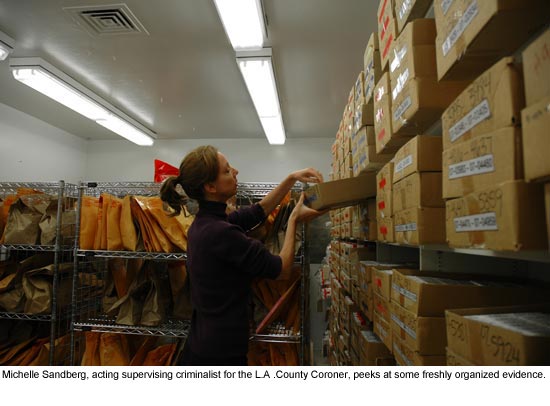


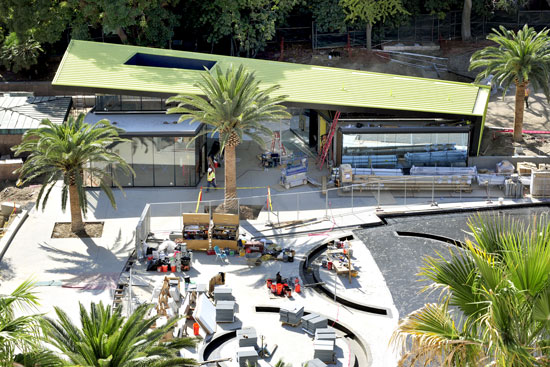
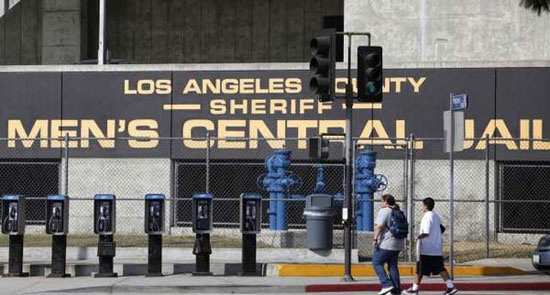
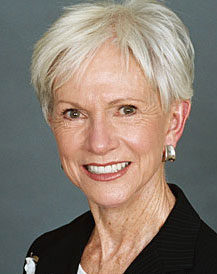


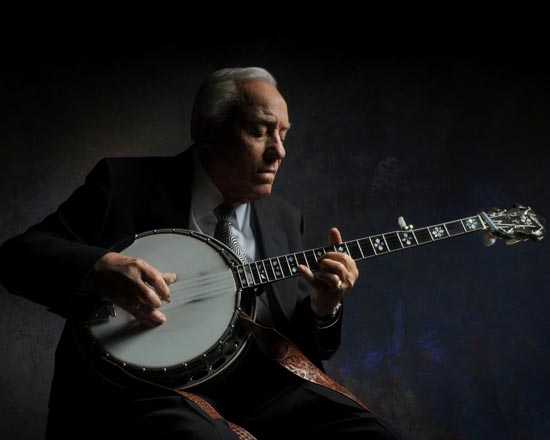
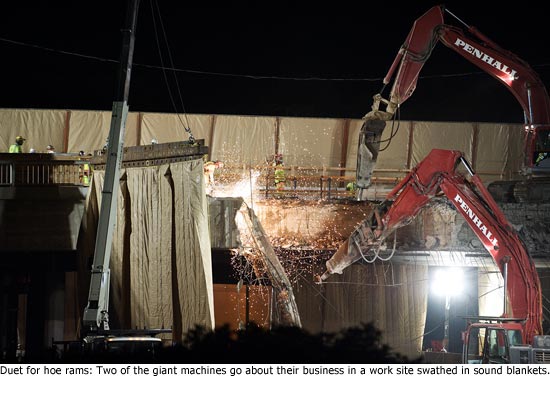
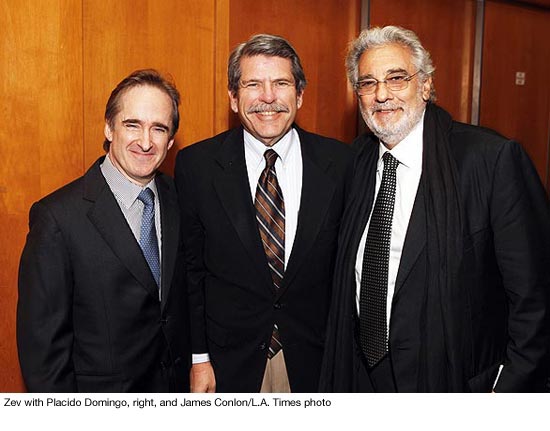





 Check for the latest closure information
Check for the latest closure information








